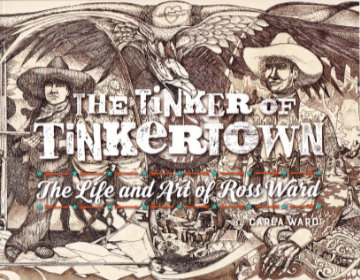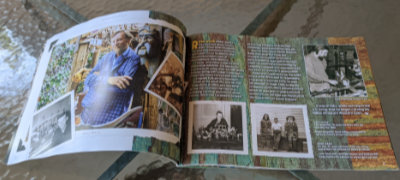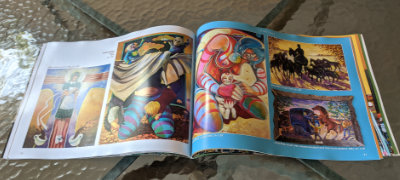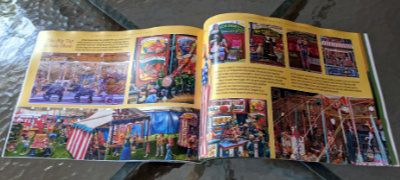 I guess my purchase of this book fits the technical description of an impulse buy, but I sure don’t think of it that way. Yes, I bought it without a hint of hesitation the instant I learned of its existence and there was certainly a lot more emotion than logic involved in the decision. But I sincerely believe that the logical part of my brain had long ago decided that acquiring this book was something I needed to do as soon as it existed. If it ever did.
I guess my purchase of this book fits the technical description of an impulse buy, but I sure don’t think of it that way. Yes, I bought it without a hint of hesitation the instant I learned of its existence and there was certainly a lot more emotion than logic involved in the decision. But I sincerely believe that the logical part of my brain had long ago decided that acquiring this book was something I needed to do as soon as it existed. If it ever did.
It was the last day of June 2011, almost exactly nine years before I heard of this book, that I first heard of Tinkertown. As I sat in an Albuquerque hotel room working on the day’s journal, a friend sent a message saying, “Don’t forget to checkout Tinkertown”. In the morning, I did just that and was immediately blown away. Ross Ward, the tinker — and creator — of Tinkertown had already been gone for many years but I got to see many of his artworks, meet Carla, his widow, and tour the museum that the two of them had built in Sandia Park. It was a place that simultaneously reminded me of some of the many one-man folk-art installations I’d seen while being completely unlike any of them.
As I’m sure is the case with many visitors, it was the mechanized carvings that made the biggest impression on me. It’s the sort of blending of engineering and artistic creativity that tugs at both the analytical and the aesthetically driven parts of my brain. There was ample evidence of Ward’s other talents in some flat paintings, the bottle filled walls, and the sometimes whimsical but always artful signs appearing throughout the museum and grounds. There were enough hints of Ward’s life outside of Tinkertown to seriously arouse interest. That interest really can’t be satisfied with a single book, but this one does a remarkable job of trying.
 Sometime between the book being ordered and its arrival, I revisited its description and noticed its length of thirty-six pages. I wasn’t worried but I did wonder how Carla could tell Ross’ story in just three dozen pages. The answer, as I think I already knew, is “Just fine.” She tells it with pictures and just enough well-chosen words to properly place those pictures in Ross Ward’s life and to tell some details of that life that the pictures do not.
Sometime between the book being ordered and its arrival, I revisited its description and noticed its length of thirty-six pages. I wasn’t worried but I did wonder how Carla could tell Ross’ story in just three dozen pages. The answer, as I think I already knew, is “Just fine.” She tells it with pictures and just enough well-chosen words to properly place those pictures in Ross Ward’s life and to tell some details of that life that the pictures do not.
 There are several delightful photos of Ward, but the bulk are of his art and the bulk of those are in a section of “2D Work”. It’s a section I found quite interesting as most of its contents are things not displayed at Tinkertown. Items range from posters to etchings to fine art paintings representing nearly every period in Ward’s life. A personal favorite is a circus parade that he drew on thirty feet of adding machine paper at the age of eight.
There are several delightful photos of Ward, but the bulk are of his art and the bulk of those are in a section of “2D Work”. It’s a section I found quite interesting as most of its contents are things not displayed at Tinkertown. Items range from posters to etchings to fine art paintings representing nearly every period in Ward’s life. A personal favorite is a circus parade that he drew on thirty feet of adding machine paper at the age of eight.
 A “Tinkertown” section follows. The pictures in it are of things I’ve seen but that doesn’t make me enjoy it any less. The well-done photos provide an excellent look at the exhibits that got me interested in Ross Ward to begin with. A timeline of Ross Ward’s life appears on the final page.
A “Tinkertown” section follows. The pictures in it are of things I’ve seen but that doesn’t make me enjoy it any less. The well-done photos provide an excellent look at the exhibits that got me interested in Ross Ward to begin with. A timeline of Ross Ward’s life appears on the final page.
There might be just thirty-six pages in The Tinker of Tinkertown, but they are really great pages. I’ve learned that images of the flat artwork came from high-resolution scans and that Carla (with an iPhone 11) is responsible for most of the modern photos including those shots of sideshow attractions and trapeze artists in Tinkertown. The images are well served by the fairly heavy semi-gloss paper they are printed on. That paper, by the way, is Forest Stewardship Council certified which speaks not only to the quality of this book but to the quality of the people at Tinkertown.
The COVID-19 pandemic caused Tinkertown to miss its traditional April 1 opening this year but the museum and staff are ready for the reopening when it is permitted. The book, of course, will be available there when that reopening occurs, but until then an online purchase is the only option available. Order your copy here.
The Tinker of Tinkertown: The Life and Art of Ross Ward, Carla Ward, Tinkertown Press, June, 2020, 11 x 8.5 inches, 36 pages, ISBN 978-0-9793124-8-9
